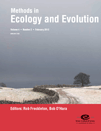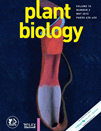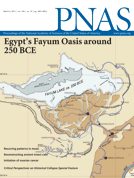I am defending my PhD thesis next Thursday (September 10, 2015) at 11.30am in the Sala d´Actes “Carles Miravitlles” of the Institut de Ciències de Materials de Barcelona (ICMAB), Campus UAB. The title of my thesis is “Metabolomics and stoichiometry adapted to the study of environmental impacts on plants” and below you can find an abstract of the work. If you are interested you are very welcome.
Metabolomics has allowed significant advances in biological sciences. An increasing number of ecological studies have applied a metabolomic approach to answer ecological questions (ecometabolomics) during the last few years. The work developed throughout this PhD thesis means a further step in the field of ecometabolomics.
The first chapter of results of this thesis is dedicated to the adaptation of a previously described protocol to conduct metabolomics in ecological studies. It describes in detail the procedures to follow, in the field and in the laboratory, to perform metabolomic analyses using nuclear magnetic resonance (NMR) spectroscopy and liquid chromatography-mass spectrometry (LC-MS) coupled to stoichiometric analysis. This improvement allowed combining the study of ecological stoichiometry and metabolomics in a single protocol and obtaining a wider overview of what is happing to the organism.
In the second and third chapters, the described protocol is applied to study how some climate change factors (drought, warming and irrigation) affect different organs of the plant (shoots and roots of Holcus lanatus and Alopecurus pratensis) at two different seasons. The results show a relationship between the metabolic variation observed in roots and the observed in shoots. The simultaneous metabolomic analysis of both organs of these grasses provide a complete view of the entire plant; including the response of different organs to environmental changes, the global phenotypic response and the metabolic mechanisms underlying these responses.
The fourth chapter is dedicated to the study of the simulated attack to Quercus Ilex leaves by an herbivore. The results show differences in the 1H NMR metabolic profiles of the leaf before and after the wound. A marked increase in C-rich secondary metabolites, quinic acid and quercitol, which are related to the shikimic metabolic pathway, was observed. The results also confirm that quinic acid and quercitol are present in great content in the genus Quercus and they are involved in mechanisms against biotic stress.
In the fifth chapter a study of the relationship between the epiphytic microorganisms and the plant host is described. This study highlights the large complexity of the episphere, the existence of internal microbial communities and the strong relationships between the structure and function of the internal and external plant metabolomes. These results warrant further study of the specific relationships between plants and the microbial communities living on and in them.






